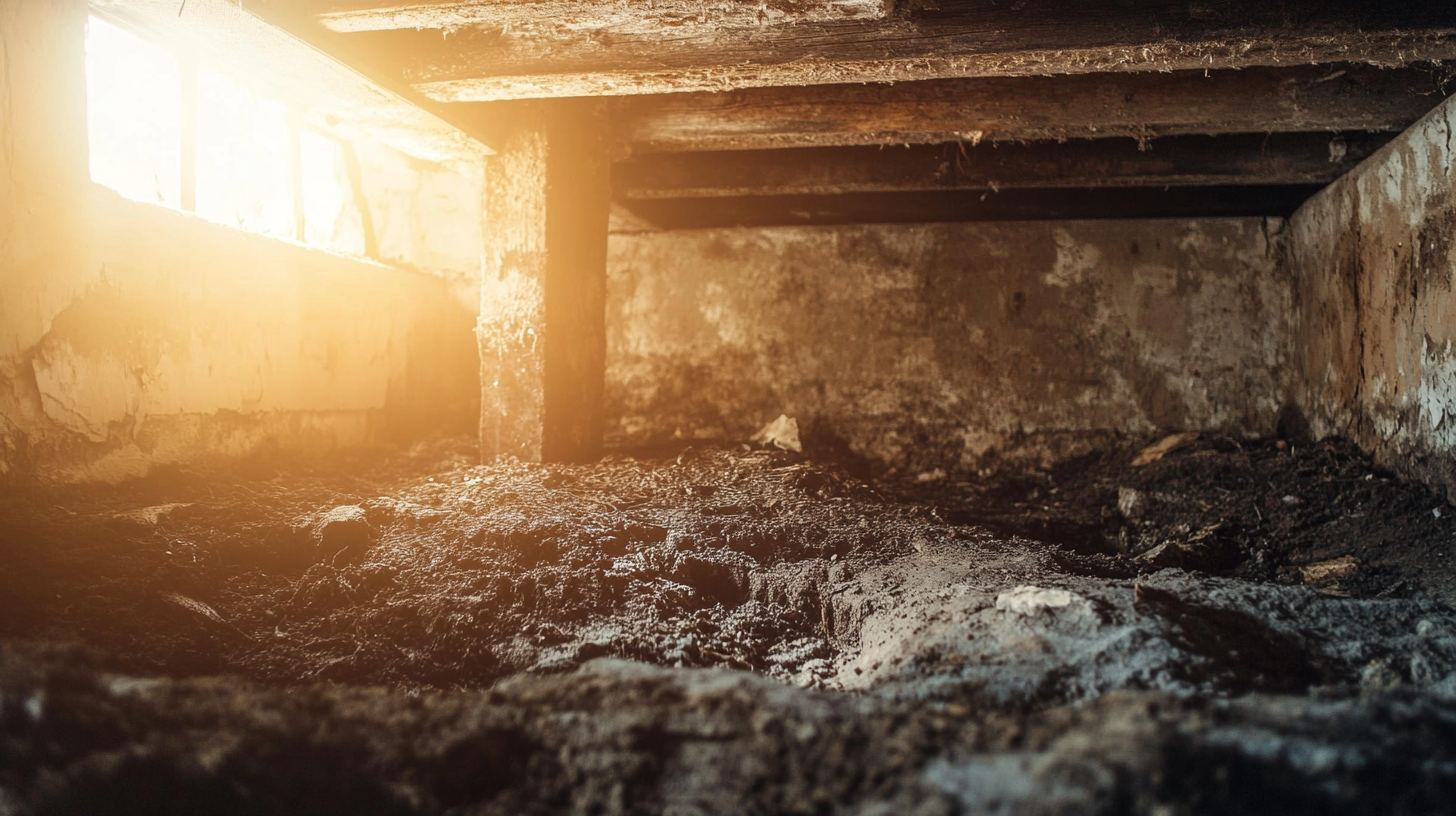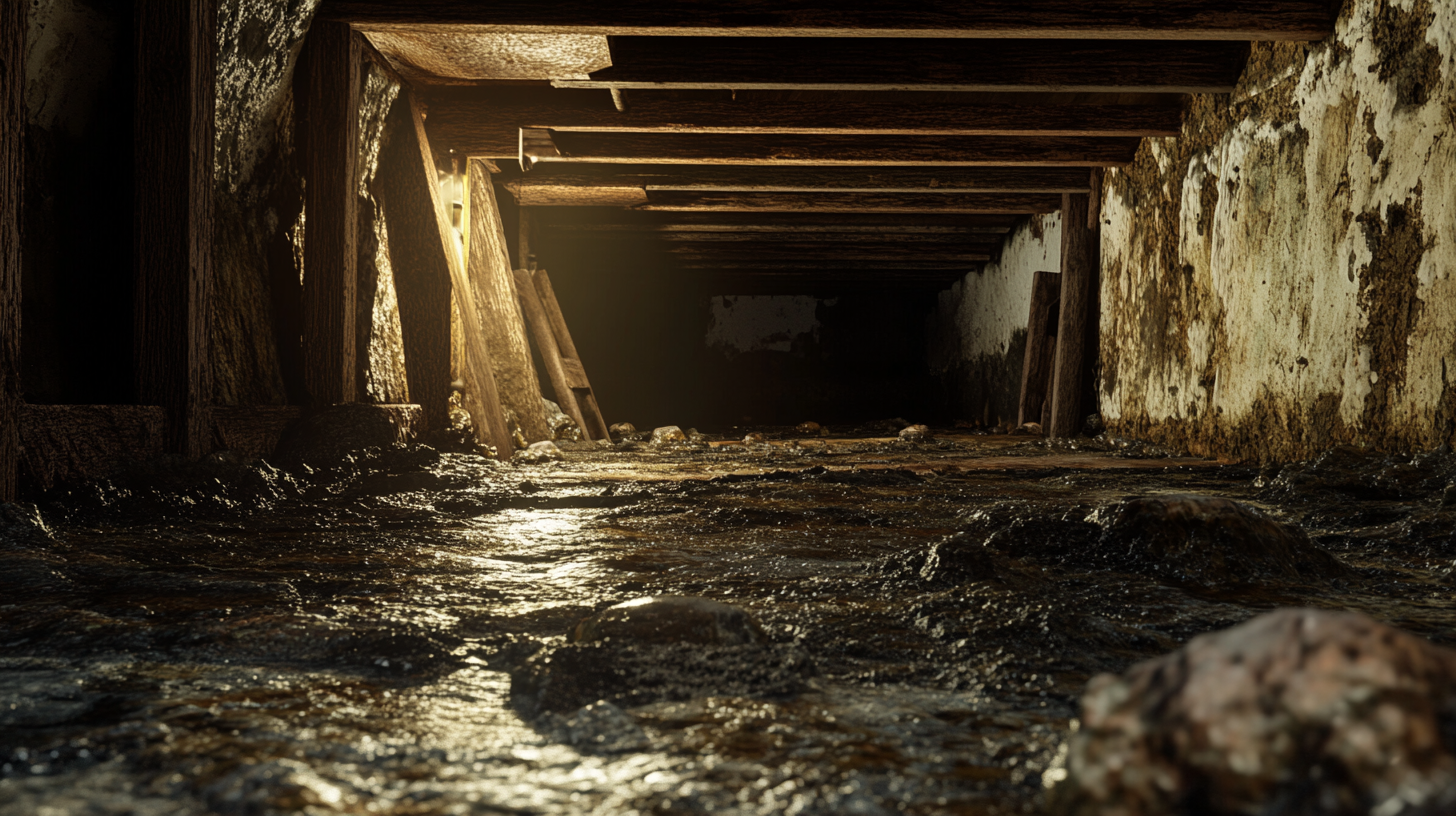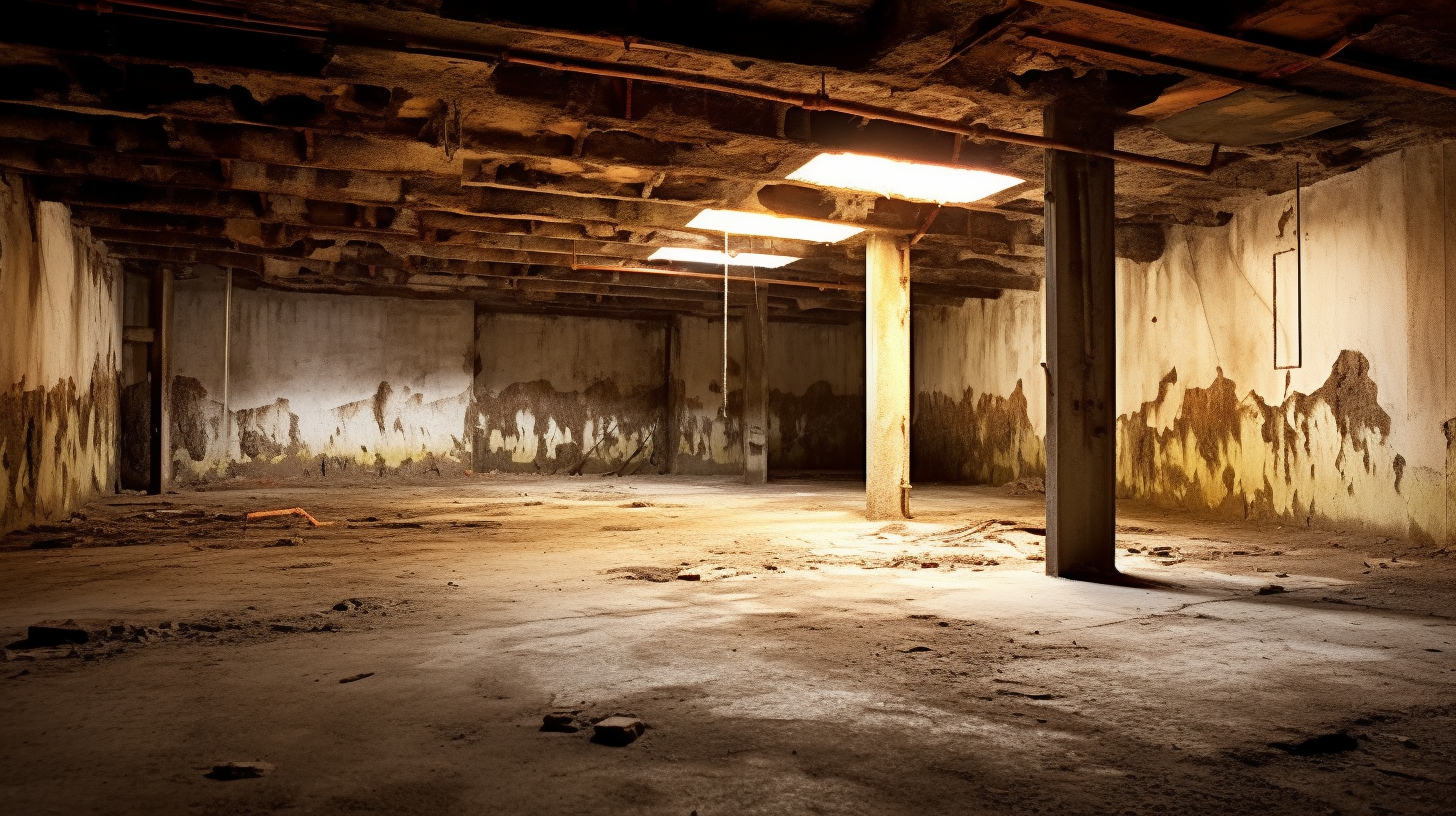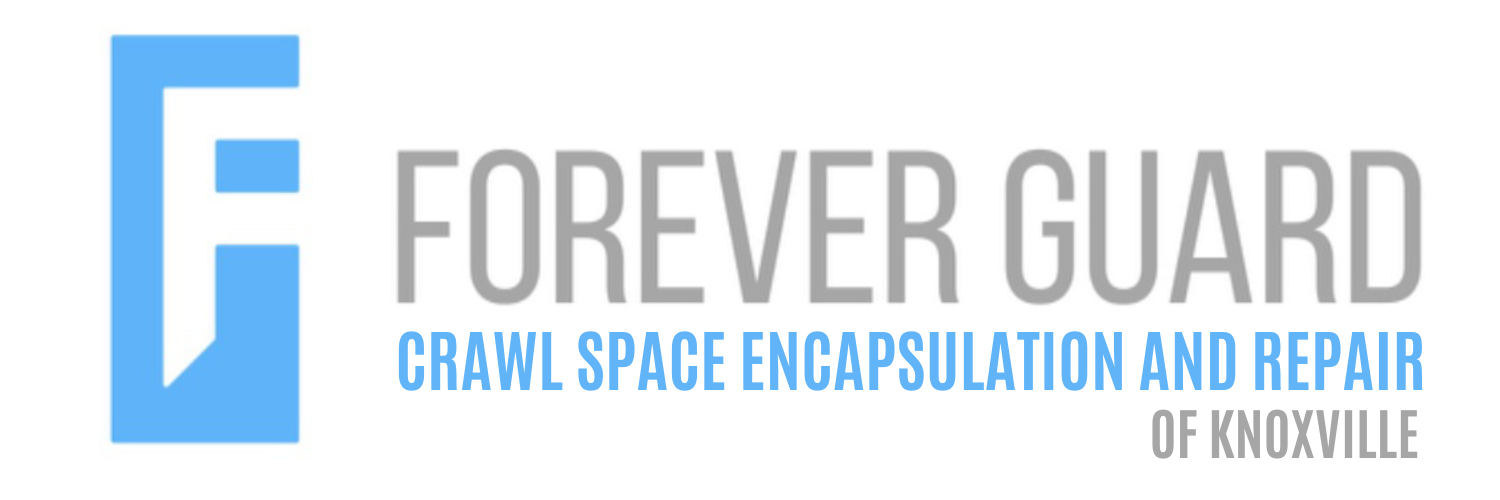Now IS THe Time To...

Crawl Space Services In Knoxville, TN
Stetson Howard: 865-432-6743
CRAWL SPACE ENCAPSULATION, REPAIR, WATERPROOFING & MOLD REMOVAL
No-Obligation, Free Inspections
No-Obligation Free Estimates
We Warranty All of Our Work
100% Satisfaction Guaranteed
Waterproofing concrete surfaces is essential for protecting structures from the damaging effects of water infiltration. Without proper waterproofing, concrete can absorb moisture, leading to cracks, water damage, and eventual structural degradation. Over time, constant exposure to water can weaken the integrity of concrete, causing erosion, mold growth, and corrosion of embedded steel reinforcement. By applying effective waterproofing solutions, property owners can prevent these issues, ensuring long-term durability, enhanced structural performance, and reduced maintenance costs. Whether for basements, foundations, or exterior surfaces, waterproofing is a critical step in safeguarding concrete surfaces from the damaging impact of water.
Why Waterproofing Concrete is Essential
Preventing Water Damage and Erosion
When concrete surfaces are exposed to water over time, they can experience significant erosion, cracking, and surface deterioration. Water infiltration weakens the concrete, causing it to break down, and eventually compromises the integrity of the entire structure. Waterproofing serves as a crucial protective barrier, preventing water from penetrating the surface. This not only helps to extend the lifespan of the concrete but also reduces the likelihood of costly repairs in the future by shielding the material from the harmful effects of moisture.
Protecting Against Mold and Mildew
Concrete, while durable, is not immune to water absorption, which can lead to moisture buildup within the material. Over time, this moisture creates an ideal environment for mold and mildew to thrive, potentially leading to health hazards and further structural damage. By effectively waterproofing concrete surfaces, moisture is kept at bay, preventing mold from growing and helping to maintain a dry and mold-free environment. This is especially important in basements, foundations, and other areas prone to dampness.
Enhancing Structural Integrity
Prolonged exposure to water can gradually weaken concrete, compromising the structure’s overall strength and stability. Unsealed concrete may suffer from foundation shifts, wall degradation, or surface cracking, all of which threaten the structural integrity of the building. Waterproofing helps preserve the strength and stability of concrete surfaces by blocking water infiltration. This is especially vital for areas that are exposed to constant moisture, such as foundations, retaining walls, or exterior concrete, ensuring the long-term durability of the structure.
Top Waterproofing Materials for Concrete Surfaces
Cementitious Waterproofing
Overview: Cementitious waterproofing involves the application of a cement-based coating that bonds directly to the concrete surface, providing a durable and impermeable layer. This method is often favored for interior applications where constant water exposure occurs.
Advantages:
- Easy to apply: This method requires minimal tools and is straightforward, making it a cost-effective solution for many projects.
- Cost-effective: Cementitious waterproofing is an affordable option, particularly in smaller interior spaces.
- Excellent protection: Ideal for areas exposed to constant water pressure, such as retaining walls and water tanks, due to its strong resistance to water infiltration.
Best For: Basements, water tanks, foundations, bathrooms, and swimming pools, where continuous moisture protection is critical.
Liquid Membranes (Polyurethane)
Overview: Liquid-applied waterproofing membranes, like polyurethane, form a seamless, flexible barrier that covers the entire surface, ensuring comprehensive protection against water ingress. This makes it highly effective for surfaces that experience movement or environmental changes.
Advantages:
- Flexibility: Its ability to expand and contract with the surface ensures long-lasting protection against cracks.
- Seamless application: This prevents weak points where water could penetrate, offering superior waterproofing.
- UV and weather resistance: Polyurethane is highly resistant to UV rays and weather fluctuations, making it ideal for exterior applications exposed to the elements.
Best For: Flat roofs, balconies, terraces, and other exposed concrete surfaces that require durable, long-lasting waterproofing.
Bituminous Waterproofing (Asphalt-Based)
Overview: Bituminous waterproofing utilizes asphalt-based products to create a strong, moisture-resistant barrier on concrete surfaces. This method is commonly used for areas with heavy exposure to water.
Advantages:
- Strong waterproofing: Especially effective for below-grade surfaces like foundations and basements, providing excellent resistance to water seepage.
- Highly resistant to moisture: Ideal for surfaces that are consistently exposed to water, such as low-slope roofs and retaining walls.
Best For: Foundations, basements, low-slope roofs, and retaining walls, where reliable waterproofing is necessary to protect against constant moisture.
Crystalline Waterproofing
Overview: Crystalline waterproofing works by applying a compound that reacts with moisture within the concrete to form water-blocking crystals. These crystals fill the pores and create a waterproof seal from within the structure itself.
Advantages:
- Self-healing properties: The compound continues to react over time, filling any new cracks that may develop, ensuring continuous waterproofing.
- Expands with water: Crystals react with water to block pathways, making this an ideal solution for concrete structures with hairline cracks.
Best For: Below-grade foundations, tunnels, water treatment plants, and reservoirs, where long-lasting, self-healing waterproofing is required.
Silane/Siloxane Sealers
Overview: Silane and siloxane sealers are penetrating sealers that soak into the concrete, forming a hydrophobic layer within the material to repel water while allowing the surface to breathe.
Advantages:
- Breathable protection: Prevents water intrusion while maintaining the concrete's ability to release moisture.
- Transparent finish: Preserves the natural appearance of the concrete, making it ideal for decorative or exposed surfaces.
- Long-lasting protection: Resists freeze-thaw damage and helps reduce efflorescence, providing durability over time.
Best For: Driveways, patios, sidewalks, brick walls, and other exterior concrete surfaces that require protection without altering their appearance.
EPDM Rubber Membranes
Overview: EPDM is a synthetic rubber membrane that provides superior waterproofing along with excellent resistance to UV rays and weather exposure. This flexible material is ideal for structures exposed to varying environmental conditions.
Advantages:
- High flexibility: EPDM can easily accommodate temperature changes and structural movement, maintaining its waterproofing integrity.
- UV and weather resistance: It offers long-lasting protection in outdoor environments, even under harsh sunlight or extreme weather conditions.
Best For: Roofs, basements, and exterior concrete surfaces that face frequent weather changes or need a highly flexible waterproofing solution.
Factors to Consider When Choosing Waterproofing Materials for Concrete
Type of Concrete Surface
The type of surface plays a key role in determining the best waterproofing solution. For flat surfaces like roofs, balconies, or terraces, flexible, seamless membranes such as polyurethane or EPDM are ideal. These materials create a continuous waterproof layer that can handle movement and water pooling, ensuring reliable protection.
On the other hand, vertical surfaces like walls and foundations benefit from cementitious or crystalline waterproofing, which offer long-term, durable protection. These materials bond well to concrete, providing a solid barrier against moisture infiltration in areas where flexibility is less critical.
Exposure to Water and Moisture
Understanding the level of water exposure is essential when selecting waterproofing materials. High-exposure areas such as basements, retaining walls, or areas below ground level should use waterproofing systems designed for below-grade applications. Materials like bituminous or crystalline systems are highly effective in these environments, as they are built to withstand constant moisture and hydrostatic pressure.
For surfaces exposed to rain or occasional moisture, a breathable sealer like silane/siloxane may be more appropriate. These sealers protect against moisture while allowing the concrete to release vapor, preventing issues like efflorescence and mold.
UV and Weather Resistance
When choosing waterproofing materials for exterior surfaces, it is important to consider their UV resistance and ability to withstand harsh weather conditions. Materials like polyurethane, EPDM, and siloxane sealers offer excellent protection against UV rays, making them ideal for surfaces such as roofs, balconies, and driveways.
In regions with frequent temperature fluctuations or freeze-thaw cycles, flexible materials such as liquid membranes are the best option. Their ability to expand and contract with the surface ensures that the waterproofing layer remains intact despite changing weather conditions, preventing cracks or damage.
Application and Maintenance Requirements
The ease of application and future maintenance should also be considered when selecting waterproofing materials. Cementitious coatings are easy to apply using simple tools like brushes or rollers, making them ideal for DIY projects. They are low-maintenance, which makes them a cost-effective option for long-term protection.
More specialized materials, like polyurethane or crystalline waterproofing, often require professional installation to ensure proper application. These materials offer long-term effectiveness but may need regular inspections and maintenance to ensure the waterproofing remains intact, particularly in high-stress environments.
Best Practices for Applying Waterproofing Materials on Concrete
Surface Preparation
Before applying any waterproofing material, it's critical to ensure the concrete surface is properly prepared. The surface must be clean, dry, and free of any debris, grease, or loose particles that could interfere with the adhesion of the waterproofing material. Any dirt, oil, or contaminants can prevent the material from bonding correctly, reducing its effectiveness.
Additionally, repairing any cracks or imperfections in the concrete is essential for achieving proper adhesion and preventing water from seeping through weak points. Filling cracks and smoothing out uneven areas will create a more uniform surface, allowing the waterproofing material to perform optimally and provide long-lasting protection.
Proper Application Techniques
Using the correct application techniques is vital for ensuring the waterproofing material works effectively. It’s important to follow the manufacturer’s guidelines carefully, whether the material is applied by brushing, rolling, spraying, or using specialized equipment. Each method requires specific steps for proper application, so adhering to the recommended process helps guarantee a seamless, reliable finish.
In areas with high water exposure or heavy traffic, applying multiple layers of waterproofing material is often recommended for enhanced protection. Additional layers provide extra durability and ensure that the surface remains protected from water infiltration and wear over time.
Regular Maintenance
Even after applying waterproofing materials, ongoing maintenance is essential to ensure the surface remains protected. Conduct regular inspections to check for signs of wear, damage, or water infiltration, especially following extreme weather conditions such as heavy rain, snow, or freezing temperatures. These inspections allow you to identify any potential issues early, preventing more significant problems later on.
If signs of wear or damage are detected, it’s important to reapply or repair waterproofing layers as needed. Addressing any issues promptly will help maintain the integrity of the waterproofing system, ensuring continued protection over time and prolonging the lifespan of the structure.
Comparing Waterproofing Materials for Concrete
Cementitious vs. Liquid Membranes
- Cementitious Waterproofing: This method is ideal for interior, below-grade applications like basements, water tanks, and foundations. Cementitious waterproofing offers rigid protection and bonds well to concrete surfaces, making it a cost-effective and easy-to-apply solution in areas where flexibility isn’t necessary. It’s especially suited for environments that experience constant water pressure but minimal structural movement.
- Liquid Membranes: In contrast, liquid membranes provide a flexible and versatile solution, making them suitable for both interior and exterior surfaces. Liquid-applied membranes, such as polyurethane, can expand and contract with the surface, making them ideal for areas exposed to environmental stress, such as roofs, terraces, and balconies. Their seamless application also ensures complete coverage, reducing the risk of water infiltration through cracks or joints.
Crystalline vs. Bituminous
- Crystalline Waterproofing: Crystalline systems work from within the concrete, reacting with water to form crystals that fill pores and cracks. This method is highly valued for its self-healing properties, where the material continues to protect even if minor cracks develop. Crystalline waterproofing is ideal for structures requiring long-term durability and internal protection, such as below-grade foundations, tunnels, and water treatment plants.
- Bituminous Waterproofing: Bituminous systems provide a robust external waterproof layer, commonly used for foundations and areas exposed to heavy water or moisture, such as low-slope roofs and retaining walls. Bituminous waterproofing is highly effective in below-grade applications where consistent moisture exposure demands a strong and durable waterproof barrier.
Silane/Siloxane Sealers vs. EPDM Membranes
- Silane/Siloxane Sealers: These are penetrating sealers designed to protect concrete surfaces without altering their appearance. They create a hydrophobic layer within the concrete, repelling water while allowing the material to breathe. Silane and siloxane sealers are best suited for decorative or exterior surfaces like driveways, patios, and brick walls, where maintaining the original look of the surface is important.
- EPDM Membranes: EPDM membranes are synthetic rubber sheets that offer flexible, weather-resistant protection. Known for their durability and ability to withstand UV rays, temperature fluctuations, and harsh environmental conditions, EPDM is ideal for heavy-duty applications such as roofs, basements, and exterior concrete structures that face prolonged exposure to the elements.
This content aligns with the Search Quality Evaluator Guidelines by offering a clear and structured comparison of different waterproofing materials for concrete, helping users understand the best options for their specific needs. The comparisons focus on practical applications, durability, and key strengths of each material.
FAQs
Recent Blog Posts
Crawl Space News







